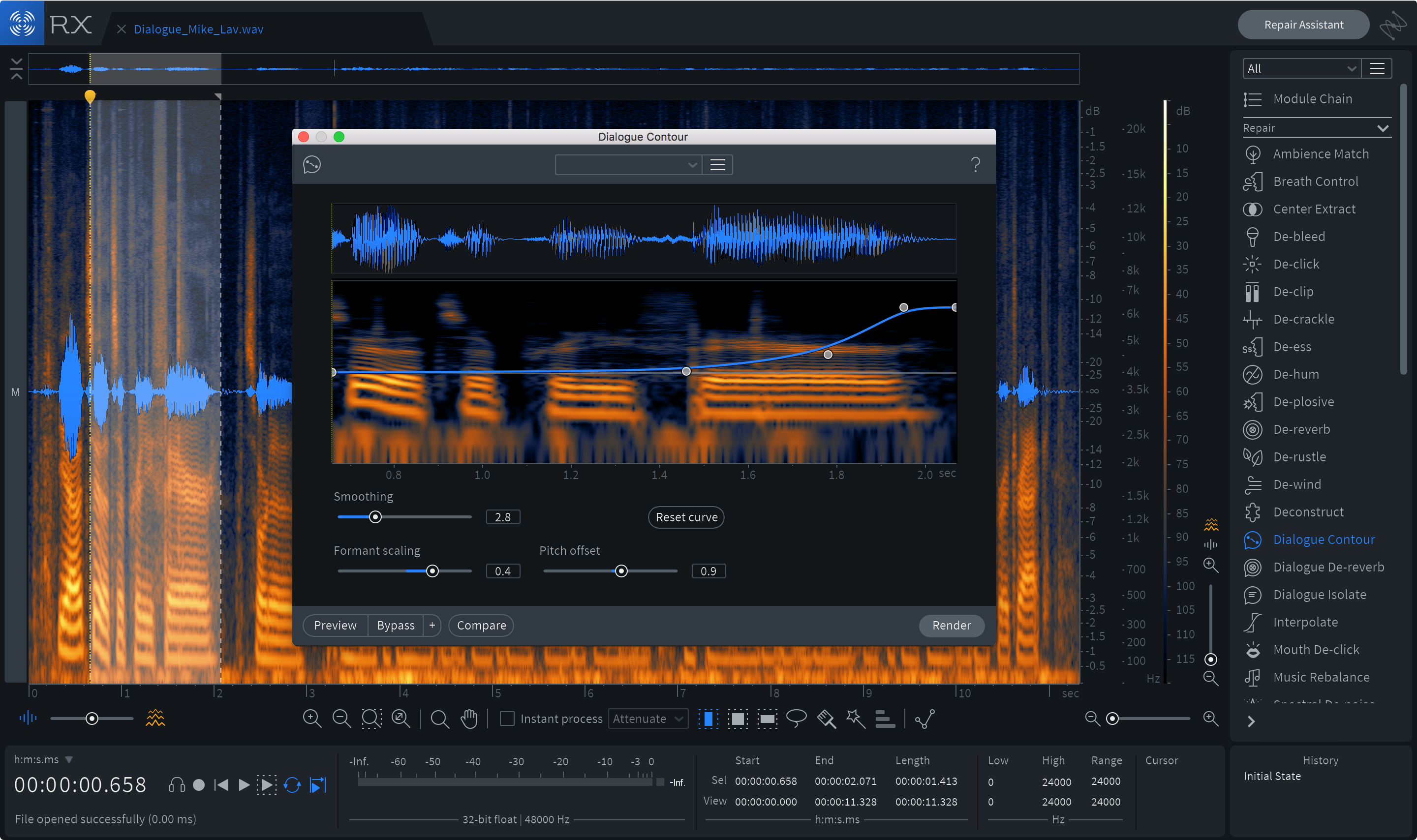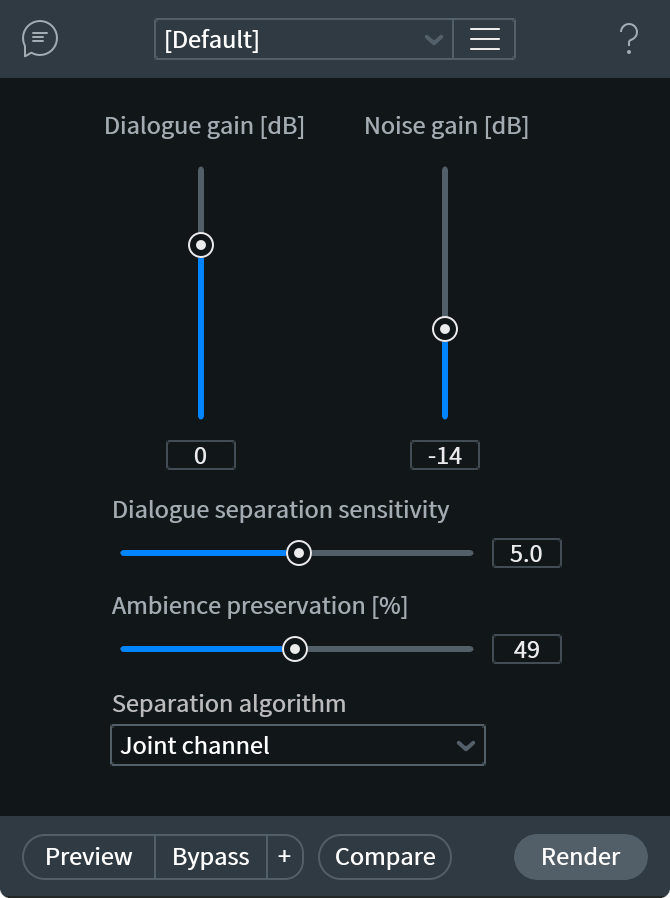How To Fix Crackly Dialogue In Izotope Rx
This is our 3rd article on iZotope's audio repair tool RX 7. We will be taking a look at the De-hum, De-crackle, De-reverb, and De-clip modules in this tutorial. Try out these modules to bring your precious recordings back to life. Apr 25, 2016 Get new tips, tricks, and sound advice from the pros in this RX Master webinar! Learn how to deal with gaps and dropouts, wind noise processing techniques, tips for visual editing in the.
- How To Fix Crackly Dialogue In Izotope Rx 1
- How To Fix Crackly Dialogue In Izotope Rx 350
- How To Fix Crackly Dialogue In Izotope Rx 3
Once you’ve downloaded the test file called, “Post Production_Dialogue Isolate,” for this tutorial from the RX web page, and opened it in RX 6 by clicking and dragging it into the RX application window, or by opening RX 6 and pressing Command+O or Control+O on a PC to locate and open the sample, your RX window should look like mine, with the file, “Post Production_Dialogue Isolate” in a tab on the top-left hand side of the screen.
Informed by machine learning to recognize and separate spoken dialogue from non-stationary background noise, such as crowds, traffic, footsteps, weather, or other noise with highly variable characteristics, Dialogue Isolate can be particularly effective at increasing the level of dialogue in challenging, low signal-to-noise ratio conditions.
Have a listen to this sample, which features some dialogue, and a very noisy background.

[voice sample]
Let’s use Dialogue Isolate to bring the dialogue center stage, and attenuate some of that background noise.
First, we see some parameters in the module. Dialogue gain controls the gain of the components in your audio recognized as speech. We can leave this slider at 0dB to reduce noise, or lower the slider to reduce the level of spoken dialogue.
In this case, we want to reduce noise, and bring the dialogue center stage, so we’ll leave it at 0dB.
Noise gain controls the gain of the components in your audio recognized as noise. We can keep the slider low to increase dialogue intelligibility, or increase it to 0dB while turning down dialogue gain to only hear the isolated noise.
Given the nature of our example, I’d like to really bring down the noise gain so that we can focus on the dialogue as much as possible.
Next, we have separation strength. For large values, meaning if I slide it to the right, the processing will more strictly define what it classifies as dialogue, which can result in more background noise reduction at the cost of possible reduction of speech.
For small values, if I slide it to the left, the processing will more broadly define what it classifies as dialogue, which will allow more background noise through, but will reduce the possibility of speech loss as a result of the processing.
Again, dialogue is king in this example, so I’ll bring my separation strength to 10. I should note that Dialogue Isolate will still process, even when the reduction strength is set to zero.
Let’s press process and listen back to our results.

I’ll press space bar to play our newly dialogue isolated track.
[voice sample, processed]
Here’s before.
[voice sample, unprocessed]
And here’s after.
[voice sample, processed]
Now, I’m still hearing a few clicks in the background, so I’m going to run Dialogue Isolate once more with the same settings to really get the best possible results, given this noisy sample.
Let’s hear the results.
[voice sample, processed twice]
So here’s the initial state before we did any processing with Dialogue Isolate.
[voice sample, unprocessed]
And here’s after.
[voice sample, processed]
For more information, tutorials, and to download your own samples to use with RX 6, head to izotope.com/RX.
RX 6 is packed with new tools to speed up common post-production tasks, like controlling breath noises, taming harsh sibilant events, and removing mouth clicks, all of which feature prominently in this vocal sample.For example, have a listen to these harsh ess sounds.
[voice over]
The brand new Spectral De-esser makes quick work of this harshness without attenuating non-sibilant events. Here is before…
[voice over, before processing]
And here is after.
[voice over, after de-essing]
The new breath control module can identify and attenuate breaths relative to the loudness of the dialogue, giving you natural breath attenuation with just one click. Have a listen to these breaths before.
[voice over, before De-Breath]
And here’s after we attenuate them with breath control.
[voice over, after breath attenuation]
Finally, we’ve also got some sneaky mouth sounds that can be distracting. Have a listen to this section.
[voice over]
To really zero in on those mouth sounds, we can use the output clicks only function in the new Mouth De-Click module.
[voice over, clicks isolated]
How To Fix Crackly Dialogue In Izotope Rx 1
And with one click, they’re gone.
[voice over, clicks removed]
Here’s before…
How To Fix Crackly Dialogue In Izotope Rx 350
[voice over, before processing]
And here’s after.
[voice over, after processing]
How To Fix Crackly Dialogue In Izotope Rx 3
For more information about the new tools for post-production in RX 6, and to download your own sample files to use with RX 6, head to izotope.com/RX.
From an outsider looking in, all I can do is show you how I would make a Trap Beat if I was going to create one – stamped with my individual style – for a client. How to make rap beat on garageband ipad 1. I’ll assume that you know almost nothing about music theory.I should also add that it’s not necessary at all to learn music theory if you want to create cool songs and melodies. What This Tutorial Will IncludeFor this tutorial, I created a track and called it “Gunshots.”I’ll explain the simple music theory behind the melodies, including chords, key signatures, scales, and modes.